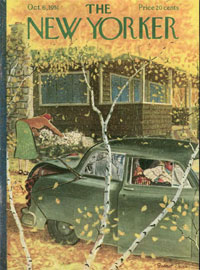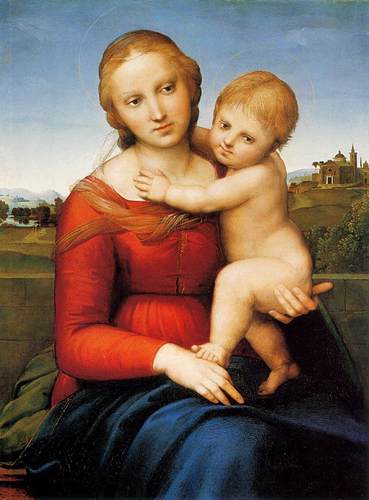From Duveen's biographer, S.N. Behrman at the New Yorker:
 |
PROFILES
THE
DAYS OF DUVEEN
II ~
A BEGINNING IN DELFT
S. N. Behrman
The New Yorker October 6, 1951: 41-62 |
The original Duveen establishment, the forerunner of the distinguished firm of Duveen Brothers, with its art galleries in New York, London, and Paris, was a blacksmith shop in the little village of Meppel, in Holland.Joseph Duveen, the proprietor, and his wife, Eva, were Jewish. They had four children—Joseph Joel, born in 1843; Henry, born in 1854; and two daughters. The blacksmith's wife must have been a remarkable woman. Although her husband, hammering out horseshoes for the farmers in Meppel, often called Joseph Joel to pump the bellows and Henry to hold the metal on the anvil, she managed, in addition to doing her household chores, to give the boys an elementary education—which was all the education they ever had—and to become a collector in a small way, the only disinterested collector the family has produced.She acquired a hobby that must have been a relaxation to her after the grind of her daily existence. She took to buying bits of Holland's celebrated delft pottery with her small savings. Whatever she could spare from the family budget she put into delft, and in time she became a connoisseur of it.She would send her two boys around the neighborhood to buy or exchange pieces, and for this particular pottery the children developed a taste that was as perceptive as her own. The blacksmith was humorously condescending about his wife's hobby. Delft was cheap, and he doubtless concluded that she bought it only because she didn't have the money to buy land or houses, as her more fortunate neighbors did. Actually, she bought it not just for that reason but because she loved it passionately. After she had been collecting for some years, the news percolated through to Meppel that across the Channel, in rich and mighty England, there were people who wanted to buy delft even if they could afford to buy other things, and this gave her a startling inspiration. She had loftier hopes for her boys than blacksmithing. In 1866, when Joseph Joel was twenty-three, she improvised a career for him; she loaded him with all the delft he could carry, and packed him off to England to sell it.Joseph Joel was quite happy to go to England, but when he got there he had a change of heart. Selling delft struck him as an unmanly sort of work, and since, like so many of the Dutch, he could speak some English, he decided to become a travelling salesman of more substantial commodities. After experimenting briefly with one unmarketable product after another, he finally hit his stride in lard. His slitherings about in lard took him, in 1867, to the city of Hull, and there, one evening, he met a Miss Rosetta Barnett, the daughter of a local pawnbroker. Either Joseph Joel was taken with her charm or he had reached the point where he wanted to settle down, or both. In any case, he proceeded to rush her, and, perhaps because he was tired of carrying it around, he showered her with his mother's delft. Miss Barnett, who had never been wooed with delft before, showed her presents to her father, and he was more impressed by them than she was.Possibly he had made advances on delft to Hull collectors who were hard up. He questioned his daughter's suitor and discovered that there was a great deal more good delft where that came from. He also found out that the young man was knowledgeable about delft but somewhat deprecatory about it. Mr. Barnett took a firm line. He didn't like the idea of having a son-in-law in lard, but he was titillated by the idea of having one in delft.He said he would give his consent to the marriage if Joseph Joel would get enough delft from his mother to set up a shop in Hull. Moreover, Mr. Barnett said, he would finance the enterprise. Joseph Joel gave up his swashbuckling career in lard, married Miss Barnett, and rented a tiny shop with living quarters above it. From delft, he branched out into furniture and objects of art, learning about his merchandise as he acquired it. He attended to the buying and selling; his wife was treasurer, a task that at first consisted largely of getting her father to put up more money from time to time. The Duveens' business and reputation grew, and so did their family. They produced eight boys and four girls. Their eldest was Joseph, the future Lord Duveen of Millbank and the greatest art dealer in history, who was born over the delft-and-furniture shop on October 14, 1869....MUCH MORE
One of the paintings that passed through Duveen's hands, The Small Cowper Madonna by Raphael which had come down through the Earls of Cowper until Duveen bought it and then sold it to Peter Widerner.
This was a fairly typical example of Duveen's observation that "Europeans have a lot of art and American's have a lot of money".
Widener ranks as the 27th richest American of all time while the Cowper clan held the Earldom for seven generations before it went extinct in 1905. Duveen sold the painting for a guesstimated $700,000 which was the highest price ever paid of a work of art (until he sold the Gainsborough in part I of the series)
Here's the painting's provenance at the NGA.
Earlier:
